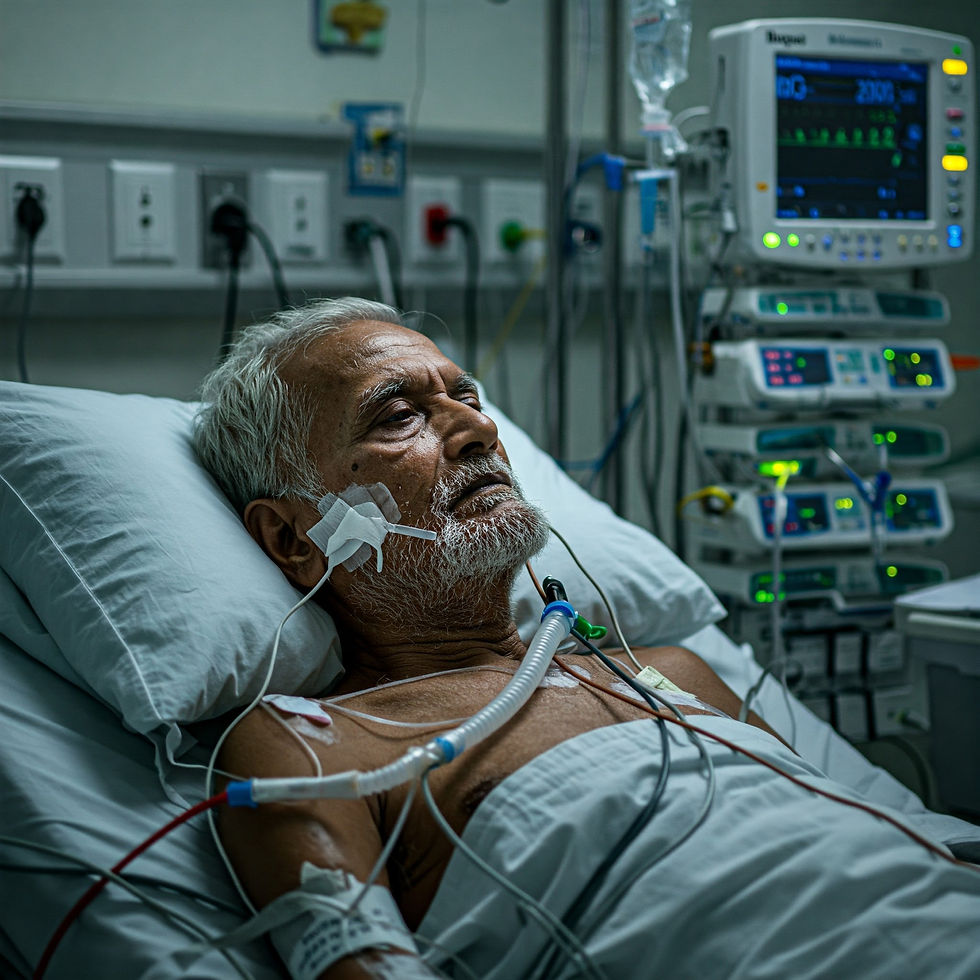Right to Die
- Madhukar Dama
- Apr 4
- 4 min read

What is the Right to Die?
The Right to Die is the concept that a person should be allowed to end their life voluntarily, especially in cases of terminal illness, unrelievable suffering, or a permanent vegetative state. It includes:
Passive euthanasia: Withdrawing medical treatment.
Living will / advance directive: A document where a person outlines how they wish to be treated if they become terminally ill or unconscious.
Why is the Right to Die Important?
(Exhaustive List with Explanations)
Human Dignity– Everyone deserves a dignified end without prolonged suffering.Example: A terminal cancer patient choosing not to undergo painful treatment.
Relief from Unbearable Suffering– Some conditions cause pain that no treatment can ease.Example: Advanced ALS (Lou Gehrig’s disease) or end-stage cancer.
Autonomy over One’s Body and Life– Personal freedom includes the right to decide when and how to die.Example: Choosing death rather than months of painful existence.
Prevents Forced Medical Intervention– Patients can refuse life-support that only prolongs suffering.Example: A coma patient not wanting to be kept alive on a ventilator.
Reduces Emotional and Financial Burden on Families– Long-term ICU care drains families financially and emotionally.Example: Keeping a brain-dead patient alive for months through machines.
Supports Mental Health and Emotional Choice– Especially for those with terminal psychiatric suffering (though controversial).Note: This is not legally accepted in India, but is debated globally.
Avoids Dehumanizing End-of-Life Treatment– Patients may be reduced to mere “bodies in beds” in hospitals.Example: A person in a vegetative state being tube-fed for years.
Ethical Medical Practice– Doctors shouldn’t be forced to prolong suffering unnecessarily.
Respect for the Dying Person’s Wishes– It honors the decision of those who don’t want artificial life extension.
Helps Healthcare Focus on Quality of Life, Not Just Length– Encourages palliative care, compassion, and end-of-life planning.
Legal Aspects of the Right to Die in India
1. Is the Right to Die Legal?
Yes, but only in the form of Passive Euthanasia.
Active Euthanasia (where someone is given substances to cause death) is illegal in India.
2. Landmark Judgment:
Common Cause vs. Union of India (2018)– Supreme Court recognized the Right to Die with dignity under Article 21 of the Constitution (Right to Life).– It legalized Passive Euthanasia and Living Wills.
What Is Allowed in India?
Passive Euthanasia
Withdrawing life support or medical treatment from a terminally ill or brain-dead person.
Living Will (Advance Directive)
A document that states a person’s wish to refuse life-prolonging treatment if they become incapacitated in the future.
Eligibility Criteria (India)
You can access this right if:
You are an adult of sound mind.
You are terminally ill or in an irreversible coma.
You have made a valid Living Will.
The Will is voluntarily made, not under coercion.
Medical Board and Judicial Oversight approve the withdrawal of life support.
How to Avail the Right to Die in India
1. Draft a Living Will
Declare your wish to refuse life-sustaining treatment.
Should be:
Voluntary
Signed in presence of 2 witnesses
Countersigned by a Judicial Magistrate of First Class (JMFC)
2. Medical Evaluation
When a person becomes terminally ill:
Hospital forms a Primary Medical Board.
If they approve, it goes to a Secondary Medical Board appointed by District Collector.
3. Magistrate Approval
After both medical boards agree, the case is presented to a JMFC, who confirms the Will and grants approval to withdraw treatment.
Where Can This Be Done?
In any hospital with facilities for long-term care and medical boards.
Government and private hospitals must follow the Supreme Court guidelines.
Important Notes:
Suicide is decriminalized in India (Section 309 of IPC amended), but assisted suicide remains illegal.
Right to Die is limited to end-of-life medical scenarios—not for depression or existential distress.
Active euthanasia (giving lethal doses or physical help to die) is still punishable under Indian law.
------
the last goddamn choice
they strapped him to machines,
tubes,
needles,
monitors blinking like slot machines
in a casino for the dead.
he hadn’t spoken in weeks
but they kept him alive
because paperwork said
hope.
hope,
that dirty four-letter lie
hospitals sell in small doses
with fat bills.
his eyes screamed
while mouths prayed.
his breath was borrowed,
his bones begged
for a little silence.
but no one listened
because life
is sacred
even when it’s
no longer
his.
he once wrote
on the back of a grocery bill—
“if I can’t laugh, smoke, drink or love,
let me go,
damn it.”
but that note’s gone,
buried in some drawer
beneath insurance forms
and forgotten birthdays.
now the nurse resets the beep.
the priest mumbles comfort.
and death waits politely
outside the ICU door
like a gentleman
never invited to dinner.
---



